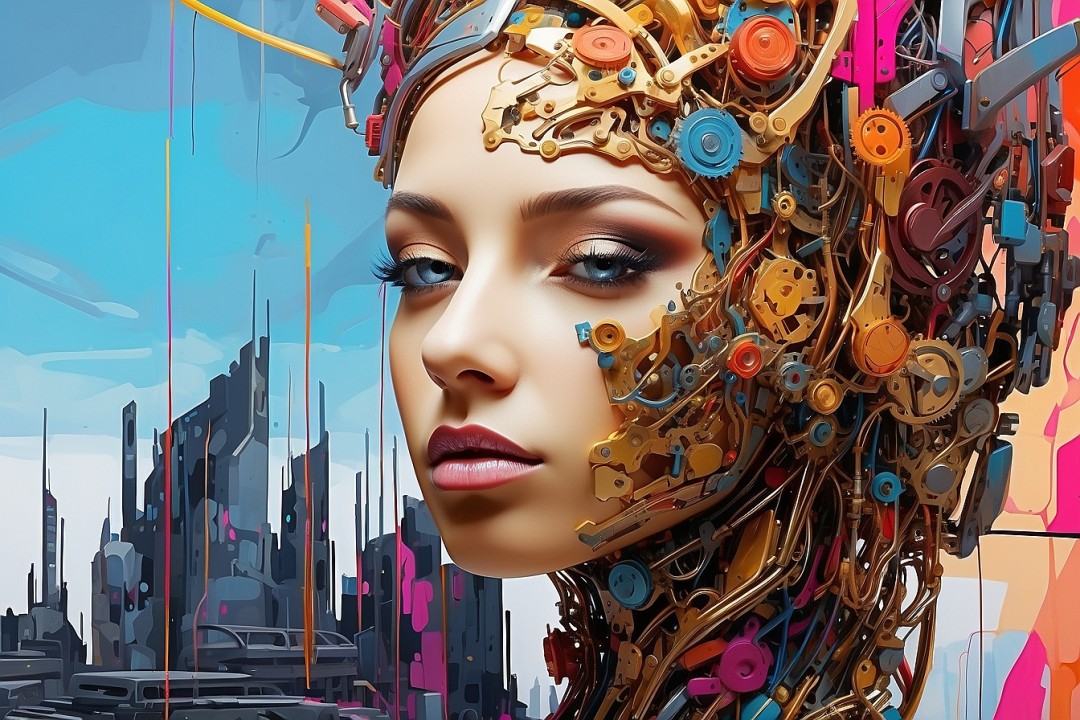
Machines Redefine Art’s Boundaries
We are entering the era of artificial intelligence. It is now very urgent to study the effects of Generative AI on fields like art. This technology has brought an interesting mix. It combines human creativity with machine efficiency. It challenges the traditional limits of art. Yet, critical questions remain — can machines create art? Does this symbiosis enhance or diminish the value of human artistry? The mix of technology and creativity is a fertile ground. It’s for robust discussion and exploration.
Key Takeaways
Generative AI is changing creative industries. It makes high-quality, unique visuals and expands art’s definition.
AI tools make an intriguing mix of artistic styles easier. They are revolutionizing image making and may change creative outputs.
Despite concerns, generative AI speeds up innovation and boosts productivity. But, it needs human supervision for output quality.
Generative AI’s future holds potential disruptions. It also promises to improve the quality and diversity of creative industries.
Generative AI: A Rising Trend
In development and industries, Generative AI has become a big trend. It has become popular in developer communities. It has seen huge investment growth over the last decade. This AI innovation drives a creative revolution. It opens the potential for new forms of expression and creation. More and more startups focus on generative AI. More AI-related publications are also increasing. Both things show this trend. Generative AI, like GitHub’s Copilot, is already helping programmers. It suggests code, leading to better productivity. But, it has also raised concerns about vulnerabilities in AI code. It shows the need for human supervision and verification. This rise of Generative AI underscores the ongoing transformation in the industry.
AI’s Impact on Creative Industries
Generative AI is revolutionizing creative industries. It offers cost and efficiency improvements in image generation. This is reshaping industries reliant on visual creativity. This AI-driven creativity extends to making high-quality images, videos, and 3D models. It does this with little human input. The economic impact is big. It brings drastic savings in time and money to creative processes. Furthermore, Generative AI can create unique visuals. They are one-of-a-kind and push the boundaries of art. It meets, and often surpasses, industry standards with outputs of generative models. But, it’s not the efficiency of this tech that’s noteworthy. It’s the new beauty it creates. This beauty expands the definition of art.
Challenges and Prospects in AI
Generative AI is a force for change in creative industries. But, it also brings new challenges and opportunities. They need careful thought and planning.
Challenges: The main obstacle is ensuring quality and accuracy in AI-generated outputs. Misinterpretations or inaccuracies, if not checked, could lead to misleading or erroneous results. It is challenging to balance human creativity and AI’s efficiency. This is a big challenge.
Prospects: Generative AI holds immense potential in enhancing innovation across various sectors. It can generate new ideas and designs. It pushes the limits of traditional creativity.
Strategies: Strategic planning is essential for integrating AI into creative processes. This includes regular quality checks. We invest in research to improve AI. We also train teams to work well with AI.
AI’s Role in Software and Creativity
Generative AI is a potent tool in software development and creative pursuits. It has reshaped the old boundaries of art. It has also boosted productivity in many industries. Automating the creation process has helped innovation a lot. This is especially true in fields where creativity is key. Creative automation is new. It has the potential to revolutionize how we make art. This includes music, film, and design. These advances have made production faster and opened new paths for art. Yet, generative AI has created vast opportunities for rethinking art. But, it’s crucial to balance human creativity and machine efficiency. Art needs this balance to ensure its continued evolution and diversity.
AI’s Disruptive Potential in Art
We are exploring the impact of generative AI. It’s clear that it could disrupt the art industry. This goes beyond improving processes and productivity. It presents opportunities for big change. We will change how we understand and create art.
AI’s art has challenged old ideas of creativity and originality. This has led to new boundaries for creativity. This disruption has sparked debates on authorship and originality in AI-generated art.
New Artistic Mediums: AI gives artists new, innovative mediums and techniques for art. They allow for merging traditional and digital art.
Art is being democratized. AI is becoming more accessible. This lets more people create and engage with art.
AI’s Expansion of Artistic Definitions
In creative industries, AI has expanded our understanding of art. It has also expanded our definition of art. The tech has sped up art innovation. It has opened new horizons for creativity. Generative AI breaks the old boundaries of art. It lets us fuse diverse styles and genres to make unique and intriguing art. This has redefined what counts as art. It blurs the line between human and machine creativity. Also, AI can learn and adapt. This ability has made it a potent tool for artistic experimentation. AI in art has broadened creative expression. It has enhanced our appreciation of art in the digital age.
Future of AI in Creative Domains
Looking ahead, adding AI to creative domains holds much promise. It could revolutionize these industries by spurring innovation, boosting efficiency, and expanding creativity.
Future Collaboration: AI and human creativity could mix to create new art. They could let artists break traditional boundaries and explore new territories. This collaboration can happen in many areas: music, visual arts, and literature. It will change how we see creativity.
Technological advances are making AI better fast. They will automate creativity more and more. This will boost productivity and allow for making complex, unique art.
Ethical considerations are key. AI’s role in creative fields is growing. Ethical issues about attribution, copyright, and authenticity will become more important. They will need thoughtful discourse and regulation.